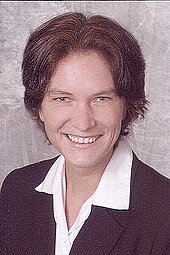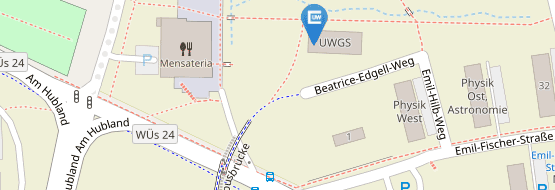Nuber, Tanja
Congratulations on passing the viva voce examination
on 29 June 2011.
Topic of the dissertation:"The image of the path and related ideas in Friedrich Schiller".
Doctoral fellowship as part of the funding programme "Equal Opportunities for Women in Research and Teaching" (1 March 2009 - 28 February 2010).
Contact address at the University of Würzburg:
Chair of Modern German Literature and History of Ideas
First supervisor: Prof. Dr Jörg Robert
Further supervisors:
Prof. Dr Roland Borgards
Class in the Graduate School: "Philosophy, Languages, Arts"
Doctorate in the Graduate School since WS 2008/2009.
Abstract:
The designation of empirical-physical impressions outlasts the general decline of such experiences. The word " path " refers either directly to corresponding phenomena of man's empirical reality or, in a figurative sense, to ideas of his spiritual or mental nature. The imagery of the path thus conveys areas that touch on the physical characteristics, mental and spiritual powers of the human being (cf. Trier, 1934. p. 179). To consciously utilise the reciprocal influence of these areas means to deal with the commercium mentis et corporis. And Schiller deals with this topic in a sustained manner (Robert, 2007; Riedel, 1985).
My dissertation takes two aspects into account when interpreting Schiller's works. Firstly, the historical constancy of the imagery of the path (image donor or source domain, cf. Westerkamp, 2007) and secondly their different meanings (image-receiving domains or target domains, cf. ibid.). If a path is evoked by Schiller's texts, the subject of my dissertation thus appears. The central image of the path in Schiller's oeuvre appears at the opening of the profound conflict between father and son Piccolomini (Schiller, NA VIII, Die Piccolomini I, 4, 463ff.). This conflict ends with Max finding himself (Schiller, NA VIII, Wallensteins Tod II, 7, 1192 ff.).
The image of the path and its symbolic tension between necessary and free action offers approaches for interesting reflections, especially for Schiller's work, because extreme positions limit the interplay of diverse possibilities, but do not capture it in its complexity. The interpretative approach to Schiller's work must engage in triadic games. The blending of religious ideas or philosophies into a 'third' is particularly evident in Schiller's work, in which religious-philosophical aspects renounce any claim to absoluteness. Schiller's work takes up partial aspects of well-known images of the way and reshapes them. However, there is as yet no treatise in the specific Schiller literature that deals intensively with the image of the path in Schiller's complete works, although interpreters of the Wallenstein trilogy frequently cite the central images of the path.
"The dimensions of the world: space, time and the self (...)" also prove to be "the main themes of poetry" for Norbert Neudecker (1972). His findings can be partially extended to Schiller's work. Ernst Trachsler (1979) considers the complex phenomenon of the path in the Middle High German Arthurian romance. Harms (1970) deals with the special situation of the "Homo viator in bivio" and concentrates on different manifestations of the Y--sign. Snell (1955), pp. 320--333, considers the symbol of the path in connection with the "discovery of the spirit".
Galinsky (1968) provides a comprehensive explanation of the history of the connection between the image of the way and the concept of nature in Europe (naturae cursus) with specific reference to English texts, especially Shakespeare's dramas. Klaus Weiss (1965) interprets the image of the path in T.S. Eliot's "Four Quartets". Some of his basic ideas on the image of the path can be transferred to Schiller's German work, with the addition of aspects that are particularly relevant in times of religious and social reorientation. The complex content of the image of the path is particularly evident in a play that depicts historical events in alternating speech and engages in interpersonal dissonances.
Otfrid Becker (1937) lays the foundations for the prehistory of the dissertation. He shows the use of the path image and the path metaphor from Homer to Sophocles.






